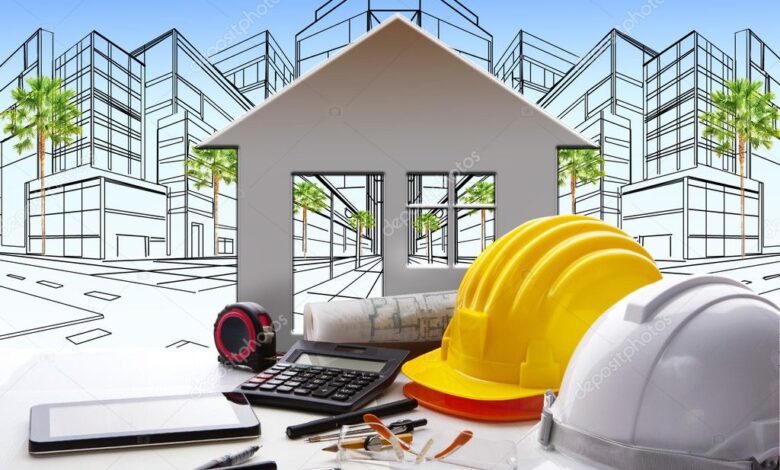Top Upcoming Trends in Civil Engineering

Technology has been developing by leaps and bounds in the last couple of years, and many things that were only a figment of imagination in the past are now either reality or on their way to becoming one. As with most other industries, this sudden acceleration in technology and its widespread use spells good news for civil engineering, one of the most popular and widely undertaken branches of engineering. If you delve into the last decade, for instance, the global focus in the field was mainly on sustainable and energy-efficient buildings as well as the utilisation of smart and innovative materials. While many of these novelties are commonplace now, an even greater number of newer technologies are entering the arena, including virtual reality, drones, 3D printing and more! The continuously shifting digital landscape in one of the most important and diverse fields of engineering is exactly what makes it so interesting and promising. The best civil engineering colleges in Kerala, like Nehru College of Engineering for instance, which comes under Nehru Group Of Institutions, focuses on many of these aspects. Let us take a look at a few of the top upcoming trends in civil engineering.
AR and VR
The technologies of Augmented Reality and Virtual Reality are not exactly new and they have found immense use in the world of gaming, automobiles and even smartphones. But it’s gradually entering the world of civil engineering and looks set to be a gamechanger through the many ways it can be used. There are many simple and high-end cardboard viewers as well as dedicated VR headsets that provide immersive experiences that would have been unthinkable only a few years back. The potential applications of Virtual Reality are limitless, and even lets you walk around and inside buildings or constructions even before they have been built. Imagine the costs that could be saved with this use, or the improvement in the usability factor! Augmented Reality, meanwhile, endows the civil engineer with a treaure trove of data by combining real-world and real-time information with software and graphics, which can be used for improving productivity, safety at construction sites, design specifications and so on. This pair of technologies therefore are not just passing fads, but extremely useful tools that will positively impact the field of civil engineering.
Large-scale use of Building Information Modeling
Like AR and VR, big data and cloud computing are technologies that are being extensively used elsewhere, but have recently found their way into civil engineering applications in a large scale manner. Many new projects are based on the results of analysis of large sets of existing data; seeing completed projects even before a single stone has been laid not only helps with design but also makes the whole process cost-efficient and streamlined. Building Information Modeling is a smart three-dimensional model-based process that gives civil engineers insights and tools to more efficiently plan, design, construct, and manage buildings and infrastructure. Workable virtual models of the designs have undoubtedly given a great push to many aspects of civil engineering.
Sustainable designs are here to stay
Civil engineers have been utilising sustainable designs for quite some time and it’s a trend that will assume even greater importance in the coming years and decades. With global population on the rise and land at a premium, there is a pressing need not just for intelligent utilisation of space and sustainable urban development, but also smart use of materials and resources. Numerous government bodies and reputed environmental agencies are encouraging sustainable construction. As a result, civil engineers are able to push the envelope when it comes to progressive sustainable designs, including smart buildings with embedded sensors, zero-energy housing, smart electrical grids, solar panels, intelligent use of space, and many other cutting-edge technologies. In top civil engineering colleges in Thrissur and Palakkad like Nehru College of Engineering & Research Centre and Jawaharlal College of Engineering and Technology, there is great importance given to sustainable construction.
Popularity of drones in construction
From its humble origins as a recreational device, drones are increasingly being used on a commercial basis. Over the years, drones have become relatively cheaper, extremely reliable and offer geat flexibility, especially when it comes to civil engineering and construction applications like surveying, development, and designing of projects. Previously, people had to manually carry out safety inspections, which was not only hazardous in many cases but covering huge areas was extremely time consuming and used up a lot of resources. With the advent of drones, safety inspections and the progress of large-scale projects can be carried out much more easily and effectively, especially in high-risk conditions. With huge amounts of time and money saved by drone usage, they will be a permanent feature in the world of construction.
Internet of Things
Civil engineering is majorly impacted by IoT, which lets objects embedded wih sensors and software to communicate with each other over the internet. In current and upcoming large-scale urban constructions, Internet of Things will play a huge role by allowing exchange of information between interconnected sensors. For instance, in massive connected communities and apartment complexes, IoT will help to gather big data from the building management systems and even keep track of various necessary parameters like concrete humidity, vibrations, chloride content variations and so on, which can be used to monitor the health of those urban constructions. And with the cost of wireless sensors being extremely affordable, this trend will only catch on further in the coming years.
3D Printing & Robotics
3D printing is yet another major advancement that has positively affected many industries across the world, and is now seeing surging demand in the field of construction and civil engineering. The technology can make full-size scale models and even the actual parts that are necessary for constructing a building. With the tech in the advanced stages for this specific field, It is only a matter of time before complete homes and bridges can simply be 3D printed!
Finally, numerous tasks, especially hazardous ones, are increasingly being done by robots in the construction industry. The advantages are many – in addition to increasing safety, it is also faster and cost effective in the long term. Though the initial costs for robotics are pretty high, prices will continue to drop with the advancement of technology and widespread use.




